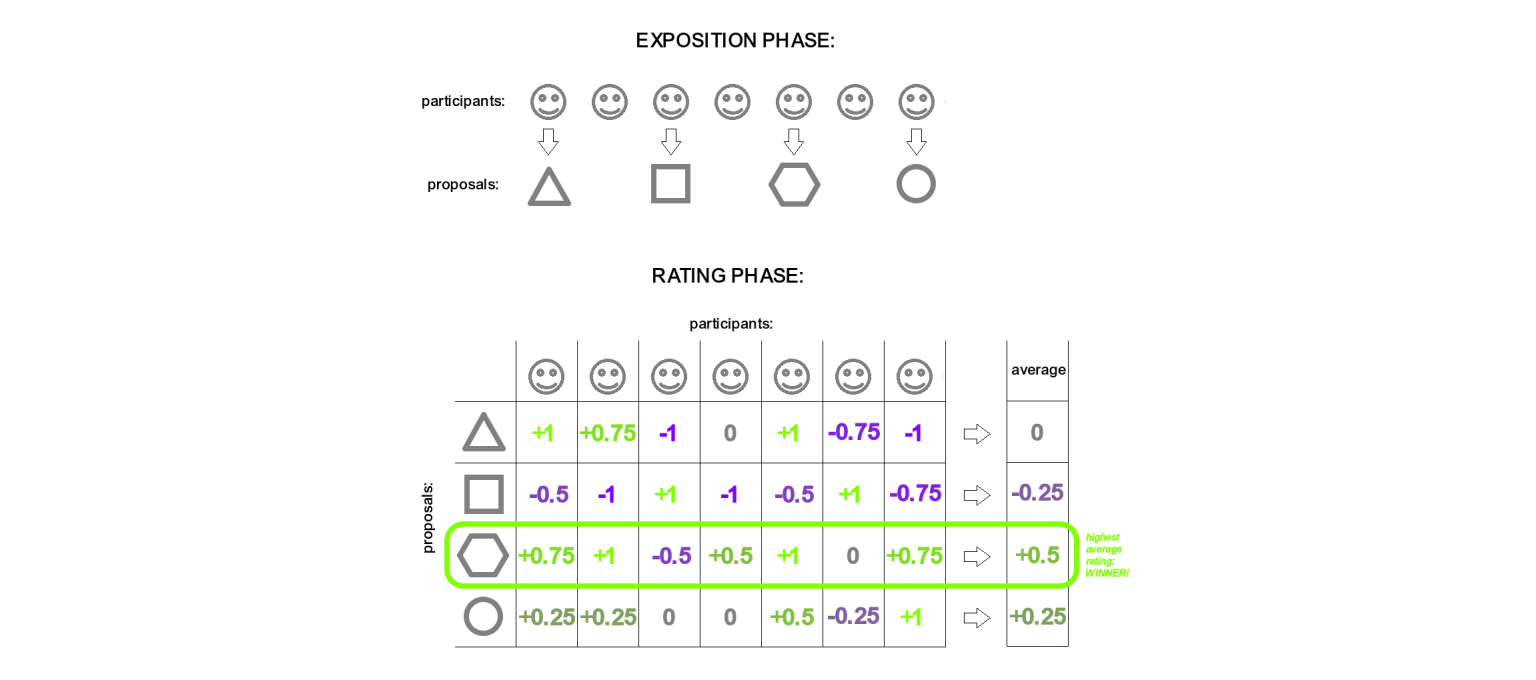
PROPORTIONAL PREFERENCE PROTOCOL
The Proportional Preference Protocol (P.P.P. in short) is the government system advocated by Project Autopia.
It's designed with the purpose of granting the highest possible degree of satisfaction to everyone's wills.
Basic scheme
Whenever an issue arises, the decisional process normally proceeds according to the following scheme:
1) Gathering: All people involved in the issue at hand (and only them) are invited to gather at the same location (for the delegates, the participation is mandatory); the location must be as close as possible to all involved people.
2) Exposition: Each participant can expose his own personal proposal relative to the issue at hand (if the participant is a delegate, instead he must expose the solution chosen by his delegators).
3) Rating: Each participant rates each proposal on a scale going from -1 (complete disagreement) to 1 (complete agreement), weighted for that participant's decisional power, whose default value is 1 (if the participant is a delegate, instead it is equal to the sum of the decisional powers of all his delegators).
4) Resolution: The proposal that gained the highest weighted average rating will be considered the chosen one.
The chosen solution will be the adopted one.

Simplified example of a P.P.P. session.
Nested scheme
In case the number of people involved in the decision is too high to allow a smooth resolution, the decisional process can be instead broken up into various sub-sessions, according to the following scheme:
1) Delegation: Each group of people (in terms of levels of social organization) that makes up the group of people involved in the issue separately decides on a delegate, chosen among its own people; the decisional process for this issue follows the same basic scheme.
2) Local session: Each one of those groups decides on the initial issue separately from the others; the decisional process follows the basic scheme, except that the people of other groups aren't considered involved.
3) Global session: The issue is now decided again, this time by the delegates; the decisional process follows the basic scheme, except this time only the delegates are considered involved.
At the end of the whole process, the chosen solution will be the adopted one.

Simplified example of P.P.P. session nesting, illustrating how the decisional power is aggregated throughout various local sessions.
The azure circles represent individuals, the red numbers represents their decisional power.
Return